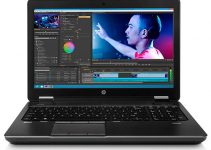When it comes down to the sound mix of your short/feature film or any other production, paying extremely close attention to every detail in this regard is a key factor to ensure success. One of the biggest challenges that many sound engineers face during the process is striving to achieve the optimal balance between all audible elements in the mix. Getting the right levels of the dialogue and music of a scene, in particular, is usually the trickiest part of the process. In this case, chances are the music will compete with the dialogue if the mix is not optimised, which may result in an overall unpleasing and distracting experience for your audience.
Usually, highly skilled sound engineers who have at least a couple of years of experience can make the right decisions and do an excellent mix even in the most challenging circumstances. So, it’s always highly recommended to hire a professional for the job if you are not sure whether you will be able to pull this off on your own.
However, if you have to mix the audio of your production by yourself here is a simple trick than can help you to improve your workflow and achieve better results in the end. In the following video tutorial, Curtis Judd reveals his personal insights and recommendations on the topic.
This simple, yet quite efficient technique we see here is known as EQ notching. Typically, a notch filter reduces the gain of a narrow band of the frequency spectrum while leaving the surrounding audio unaffected. In this particular case, Curtis Judd simply takes away some of the mid frequencies of the music thus opening some room for the dialogue in the overall mix. Additionally, this is also a possible solution when you want to avoid frequency interference issues between these or any other elements.
Your final goal is to keep both the dialogue and music to convey the emotional impact to your audience thus making the experience more immersive and believable. The first step in the process is to balance and automate the volume level of the music so that it doesn’t compete with the dialogue. If you are still not pleased with the results you can use the iZotope Ozone Equaliser as shown in the video or any other EQ filter and fine-tune the mix even further.
As a rule of thumb, the dialogue is usually placed in the 1-1,5 kHz range, so the idea is to cut some of the mid frequencies in this certain area to get the desired effect. This is a commonly used technique in mixing of audio so don’t be afraid to experiment with it. Dialogue should be nice and clear and the music should be also present. Don’t forget the foley and the rest of the elements of your mix as well.
Achieving the best possible results may be a quite time-consuming process so it’s always recommended not to rush when working on your audio. When you feel overwhelmed simply close your session and take a break for a couple of hours. Patience is a key factor here, so if you really want to improve your workflow and do the mix like a pro make sure you have enough time to spend on your project.
[source: Curtis Judd YouTube Channel]
Disclaimer: As an Amazon Associate partner and participant in B&H and Adorama Affiliate programmes, we earn a small comission from each purchase made through the affiliate links listed above at no additional cost to you.



